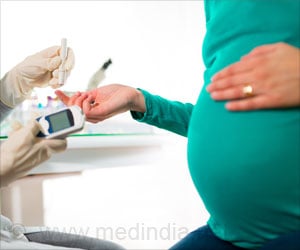- Link between maternal diabetes during pregnancy and large babies (large for gestational age – LGA) becoming overweight or obese during childhood was investigated
- LGA babies born to mothers with diabetes are at a higher risk of becoming overweight or obese during childhood
- Since LGA is a potentially modifiable factor, obesity in these babies can be prevented before they reach childhood by instituting suitable preventive measures
Read More..
Study Objective
There are many reasons why children become overweight or obese during childhood. It is well established that children who are born large are likely to be larger in childhood. Moreover, maternal weight, weight gain prior to and during pregnancy and maternal diabetes status are established risk factors for having LGA babies. The link between maternal diabetes during pregnancy and LGA babies becoming overweight or obese during childhood is still not known. The objective of the present study was to establish this link.Study Procedure
The study population included 81,226 children who were born between January 2005 and August 2013. All the mothers were primarily from Calgary, a city in the province of Alberta, Canada. When the children were of pre-school age (4-6 years of age), between January 2009 and August 2017 their height and weight were measured and information on breastfeeding status during the first five months of life was collected and then linked to data on maternal hospitalizations, outpatient visits as well as birth registry data.The children were identified as overweight or obese, based on World Health Organization (WHO) criteria and were grouped into the following categories based on (i) diabetes status of the mother during pregnancy and (ii) birth weight:
- No diabetes
- Gestational diabetes
- Pre-existing diabetes
- Appropriate for gestational age (AGA)
- LGA
| Group | No. of Children |
| No Diabetes/AGA (Control Group) | 69,506 |
| No Diabetes/LGA | 5,926 |
| Gestational Diabetes/AGA | 4,563 |
| Gestational Diabetes/LGA | 573 |
| Pre-existing Diabetes/AGA | 480 |
| Pre-existing Diabetes/LGA | 178 |
Study Findings
The rates of being overweight or obese in children of pre-school age ranged from 21% in the control group (no diabetes/AGA) to 43% in gestational diabetes/LGA group. The rates were on the higher side for pre-existing diabetes/LGA group (36%) and the no-diabetes/LGA group (35%). Moreover, children were at a 2.79-fold increased risk (almost trebled) of becoming overweight or obese if they were in gestational diabetes/LGA group, as opposed to the control group (no diabetes/AGA).Importantly, the risk of becoming overweight or obese in pre-existing diabetes/LGA and no diabetes/LGA groups were doubled when compared to the control. This clearly indicates that LGA is an independent risk factor for children to become overweight or obese.
Furthermore, the risk of childhood obesity was much higher due to LGA alone (39%), when compared to gestational diabetes alone (16%) or pre-existing diabetes alone (15%). Moreover, it was found that the risk contributed by gestational diabetes/LGA and pre-existing diabetes/LGA were 50% and 39% respectively.
In order to gain further insight, the pre-existing diabetes group was separated into Type-1 diabetes and Type-2 diabetes subgroups. The results of the prevalence of overweight or obese children in the various groups are tabulated below:
| Group | Prevalence of Overweight/Obese Children (%) |
| Type-1 Diabetes/AGA | 21 |
| Type-1 Diabetes/LGA | 31 |
| Type-2 Diabetes/AGA | 27 |
| Type-2 Diabetes/LGA | 42 |
Interpretation & Expert Comments
In the opinion of the authors, LGA at birth is a modifiable factor. The study highlights the need to better understand the factors responsible for the occurrence of LGA. This will help develop strategies to prevent an infant from becoming overweight or obese in childhood. Moreover, the authors believe that LGA could be a surrogate marker for two factors that were not addressed in the study. These include the following:- Maternal weight: Excess pre-pregnancy weight or gestational weight gain
- Blood glucose control during pregnancy
Breastfeeding status in the first five months of life also influenced the likelihood of becoming overweight or obese in childhood. If the infants were breastfed, there was a 25% lesser chance of them becoming overweight or obese during childhood. This was true for all the groups except gestational diabetes/LGA and pre-existing diabetes/LGA groups (both Type-1 and Type-2 diabetes).
The authors said: “The protection offered by breastmilk did not extend to the gestational diabetes/LGA and pre-existing diabetes/LGA groups – not overall, nor in the Type-1/LGA and Type-2/LGA subgroups. If, as we believe possible, LGA is a marker for poor blood sugar control during pregnancy, further research is needed to examine whether, as suggested previously, glucose and insulin levels in the breast milk of mothers with diabetes may increase, rather than protect against, the risk of childhood obesity.”
Source of Funding
This study was funded by the Canadian Institutes of Health Research (CIHR) through a peer-reviewed operating grant (Number RN125845–251412).Reference:
- Association between maternal diabetes, being large for gestational age and breast-feeding on being overweight or obese in childhood - (http://diabetologia-journal.org/wp-content/uploads/2018/11/Kaul.pdf)
Source-Medindia
















